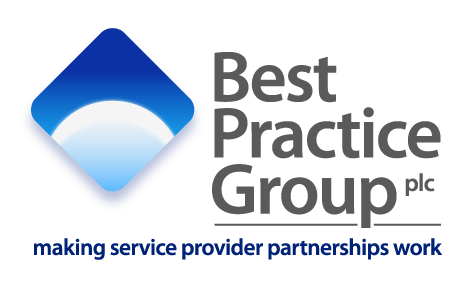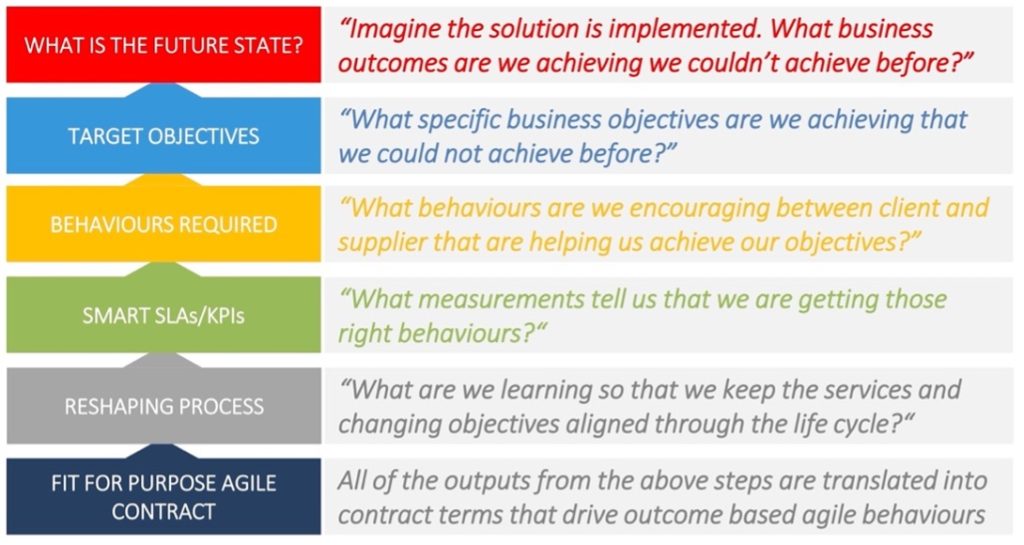 Over the last few decades, we have regularly been involved in designing or realigning SLAs (Service Level Agreements) for highly complex projects to assure fit-for-purpose contracts and optimise strategic provider relationships. We are often also asked to design or realign a project’s KPIs (Key Performance Indicators). While SLAs and KPIs are often cited as if they were interchangeable, it is important to recognise the fundamental differences between the two, something we address within this article.
Over the last few decades, we have regularly been involved in designing or realigning SLAs (Service Level Agreements) for highly complex projects to assure fit-for-purpose contracts and optimise strategic provider relationships. We are often also asked to design or realign a project’s KPIs (Key Performance Indicators). While SLAs and KPIs are often cited as if they were interchangeable, it is important to recognise the fundamental differences between the two, something we address within this article.
Why is it so difficult to design SLAs and KPIs that work in the real world?
Creating SLA and KPI guidelines isn’t always a straightforward process. There are common challenges that clients and supplier teams face: from deciding on the right targets to working out the best way to measure success. We look at ten common areas – which experience shows can be navigated in different ways – that help to create SLAs and KPIs that actually work:
- Definition of Metrics: Different stakeholders might have varying interpretations of what a particular metric means or how it should be measured.
- Target Levels: What constitutes an acceptable level of performance or service is often a point of contention and stakeholders usually have different expectations based on their roles and perspectives.
- Measurement Methodology: Stakeholders often disagree on how a metric should be measured, especially if there are multiple ways to obtain the data.
- Penalties for Non-compliance: It is common for there to be misalignments over what penalties or remedies should apply if the SLA is not met.
- Scope of SLAs/KPIs: Determining which processes or services should have SLAs or KPIs attached to them is usually a point of contention.
- Review and Revision Periods: Stakeholders can have different views on how often SLAs and KPIs should be reviewed and potentially revised. While it is generally accepted that regular reviews are beneficial, the exact frequency can be debated.
- Data Source and Integrity: Questions often arise about the reliability and accuracy of the data sources used to measure KPIs, especially if third-party tools are involved.
- Exclusions and Exceptions: Stakeholders can disagree on what circumstances or events should allow for exceptions to the SLA terms. It is essential to account for unforeseen events, but defining them can be tricky.
- Resource Allocation: There are usually concerns over the resources (time, money, and personnel) allocated to meet the SLAs and KPIs. Resources are often limited, and their allocation can impact other areas of the project.
- Interdependencies with Other KPIs: Stakeholders often have different views on how one KPI might impact another. This often happens in complex projects where many processes are interconnected.
Navigating these challenges
Creating your SLA to avoid these ten challenges is a crucial stage of a complex project. There is no ‘one-size-fits-all’ template for SLA design that would allow for a shortcut through this phase of work. A fit-for-purpose SLA must be reverse-engineered from the specific business outcomes and objectives of both the organisation and the project being worked on. SLAs (and KPIs) form part of a chain of documentation, all of which should be designed and aligned – working backwards from the clearly articulated outcomes in the business case and using inputs from the requirements specifications, project and implementation plans, and governance.
These challenges inform the process of reverse engineering our SLAs from the desired ‘future state’ – the point at which a successful solution has been employed and results in the desired outcomes being realised. The image below helps to explain the principles of our strategy for designing fit-for-purpose SLAs, and in this article we take a closer look at the key steps involved.
 What is the difference between SLAs and KPIs?
What is the difference between SLAs and KPIs?
Before delving into the process of designing your SLA, it is important to clarify the differences between SLAs and KPIs as they are sometimes confused with one another. It is not unusual to see SLAs and KPIs referred to in the same breath, even being cited as ‘SLAs/KPIs’, as if they were interchangeable. While they are both used to track and measure the performance of a business/provider relationship, they have some key differences, as set out in the following table:
| SLA | KPI |
|---|---|
| Definition: a formal agreement between a service provider and a customer that outlines the level of service that the provider is obligated to deliver | Definition: a measurable value that demonstrates how effectively a company is achieving key business objectives |
| Focus: on specific service delivery targets, such as response time or uptime | Focus: on broader business objectives, such as revenue growth or customer satisfaction |
| Responsibility: typically the responsibility of the service provider, who is contractually obligated to meet the agreed-upon targets | Responsibility: responsibility of the company as a whole, and used to evaluate the performance of different teams or business units |
| Measurability: easily measurable, as they involve specific metrics such as response time or uptime | Measurability: can be more difficult to measure, as they may involve more subjective measures such as customer satisfaction or employee engagement |
An SLA typically includes one or more performance targets, such as response time, resolution time, availability, or customer satisfaction. KPIs can be set to measure the actual performance against these targets, allowing service providers to track and analyse their performance over time and to ensure that they are meeting their contractual obligations.
For example, if an SLA includes a target for a response time of less than 30 minutes, a KPI could be set to measure the actual response time for each customer interaction. This KPI could then be tracked and analysed over time to ensure that the service provider is meeting the SLA. KPIs can also provide insights into areas for improvement or optimisation, allowing service providers to proactively identify and address issues before they become major problems.
How to Create a Fit-for-Purpose Service Level Agreement
Outlined below are the key steps to creating a fit-for-purpose Service Level Agreement that aims to meet the needs of all stakeholders and to assure the success of your complex project.
-
-
Define the project scope and objectives
-
To create a fit-for-purpose SLA, it is important to clearly define the scope and business objectives of the project. This involves identifying the specific tasks and responsibilities that will be included in the agreement, as well as the desired business outcomes and goals of the project. This information can be used to guide the development of the SLA and to ensure that all parties have a clear understanding of the project’s purpose and expectations.
Benefits: Helps to ensure that both the client and the provider are working towards the same goals. Reduces the risk of miscommunication and misunderstandings and provides a basis for setting performance metrics and determining resource requirements.
Impact of missing this step: If the project scope and objectives are not clearly defined, there is a likely risk that the SLA will not effectively support the project and that performance metrics and resource requirements may not be aligned with the project goals. This can easily result in missed deadlines, sub-optimal outcomes, and disputes between parties.
-
-
Identify and prioritise stakeholders
-
Once the project scope and objectives have been defined, the next step is to identify and prioritise the stakeholders involved in the project. This includes both internal stakeholders such as employees and departments, as well as external stakeholders such as customers, partners, and providers. It is important to understand the different role each stakeholder plays within the project and their responsibilities, then to prioritise their needs and concerns when developing the SLA.
Benefits: Helps to ensure that the SLA takes into account the needs and interests of all parties involved in the project. This can help to minimise conflicts and ensure that the SLA is fit for purpose for all stakeholders.
Impact of missing this step: If stakeholders are not identified and prioritised, their needs and interests may not be considered in the development of the SLA. This can result in conflicts and disputes between parties and can undermine the effectiveness of the SLA in supporting the project.
-
-
Determine service level expectations
-
This involves identifying the specific performance metrics that will be used to measure success, such as response times, uptime, and quality of service. It is also important to determine the target levels for each metric and to establish the consequences for failing to meet these targets.
Benefits: Helps to ensure that the SLA supports the project goals. It also provides a clear basis for measuring performance and determining consequences for failure to meet expectations.
Impact of missing this step: An increased risk of the SLA not effectively supporting the project and of performance metrics not aligning with the project goals. This can result in missed deadlines, sub-optimal outcomes, and disputes between parties.
-
-
Assess risks and responsibilities
-
This step involves identifying potential risks and assigning responsibilities to mitigate those risks. The goal of this step is to ensure that everyone involved in the project is aware of their roles and responsibilities, as well as the potential risks involved.
Benefits: A better understanding of potential risks, improved risk management, clear assignment of responsibilities, and reduced likelihood of misunderstandings and conflicts.
Impact of missing this step: Increased likelihood of risks occurring, poor risk management, confusion over responsibilities, and potential disputes and conflicts.
-
-
Identify and allocate resources
-
Here, you are determining what resources will be required to deliver the project and making sure that they are available. This includes identifying any equipment, materials, suitably qualified, experienced, and competent personnel and other resources needed to complete the project.
Benefits: Improved project planning, better resource utilisation, increased efficiency, and improved project outcomes.
Impact of missing this step: Likely reduction in project efficiency, increased chance of project delays, potential for decreased overall project quality or even project failure.
-
-
Establish performance metrics and reporting requirements
-
You need to determine how project performance will be measured and reported and establish standards for reporting. This step helps ensure that everyone involved in the project is aware of what is expected of them and by when, and helps to keep the project on track.
Benefits: Improved project performance monitoring, increased accountability, better understanding of project progress, and improved project outcomes.
Impact of missing this step: Poor project performance monitoring, lack of accountability, reduced visibility of project progress, and increased likelihood of project failures.
-
-
Develop and agree on a dispute resolution process
-
This step involves determining how disputes will be handled if they arise. It helps to prevent disputes from escalating and becoming more difficult to resolve.
Benefits: Improved conflict resolution, reduced likelihood of disputes escalating, increased project stability, and improved project outcomes.
Impact of missing this step: Increased likelihood of disputes escalating, reduced project stability, and decreased overall project quality.
-
-
Outline communication and collaboration expectations
-
This step involves determining how all stakeholders will communicate and collaborate throughout the course of the project. It helps to ensure that everyone involved in the project is aware of what is expected of them and helps to keep the project on track.
Benefits: Improved project communication, better collaboration among stakeholders, increased project efficiency, and improved project outcomes.
Impact of missing this step: Reduced project communication, poor collaboration among stakeholders, decreased project efficiency, and decreased overall project quality.
-
-
Define the contract term and renewal process
-
Before finalising the SLA, it is important to define the contract term and the process of renewal. The contract term refers to the length of time the SLA will be in effect, while the renewal process refers to the steps required to renew the SLA when the contract term is due to expire.
Benefits: Helps to ensure the continuation of the services provided under the SLA, prevents misunderstandings and disputes, and provides a structure for future negotiations.
Impact of missing this step: There can be confusion regarding the length of the SLA and the process of renewing it. This can lead to disputes, misunderstandings and even the termination of the SLA, which can negatively impact the project.
-
-
Finalise and sign the SLA
-
An obvious step, but one that is surprisingly often missed. This involves reviewing the SLA to ensure that all the details have been covered, such as the project scope and objectives, service level expectations, risks and responsibilities, resources, performance metrics, dispute resolution process, communication and collaboration expectations, contract term, and renewal process.
Benefits: Signing the SLA officially confirms the agreement between the parties and sets the terms and conditions for the project. It also provides a written record of the terms of the agreement and the responsibilities of both parties.
Impact of missing this step: If the SLA is not finalised and signed, there is no official agreement between the parties and the terms and conditions for the project are not set in stone. This can lead to misunderstandings, disputes and, ultimately, the failure of the project.
Summary
A fit-for-purpose Service Level Agreement (SLA) forms part of the contractual documentation between a service provider and its customer. It outlines the level of service expected from the provider. It sets clear expectations and responsibilities for both parties, providing a comprehensive understanding of what services will be delivered, the quality of those services, and how any issues will be addressed. SLAs should include details on service availability, response times, performance targets, and resolution times for incidents and problems. They may also specify compensation for service failures, as well as the processes for reporting and tracking performance.
In essence, an SLA defines the relationship between a service provider and its customer, and by following the steps above you can ensure that both parties have a clear understanding of their obligations and expectations, a vital ingredient of any collaborative relationship.
A fit-for-purpose Service Level Agreement helps to maintain high standards of service and provides a framework for resolving disputes or issues that may arise, keeping the relationship on track, healthy and all parties pulling in the same direction.
Other articles from the BPG Blog Library that you might find useful include:
6 Steps to Smarter KPIs to Achieve Your Business Outcomes
I have a clear set of KPIs so why is my project still failing?


